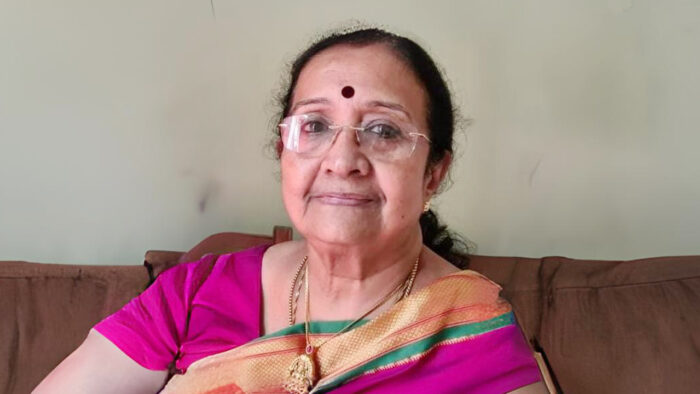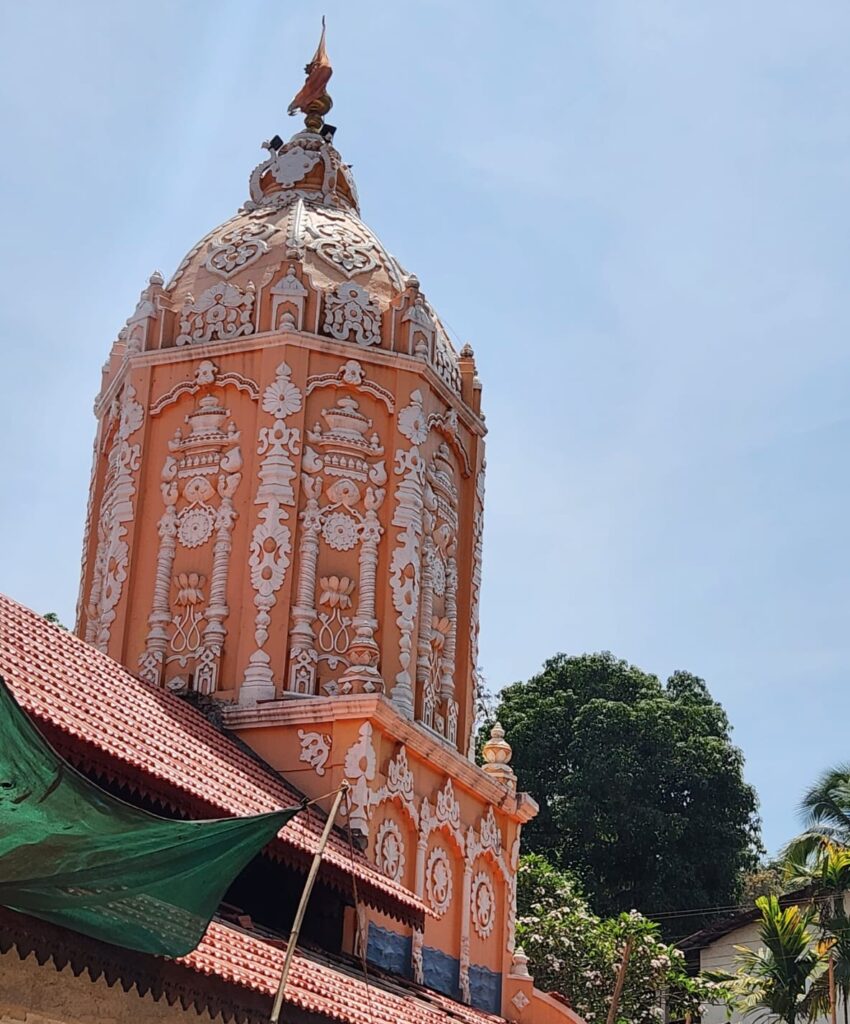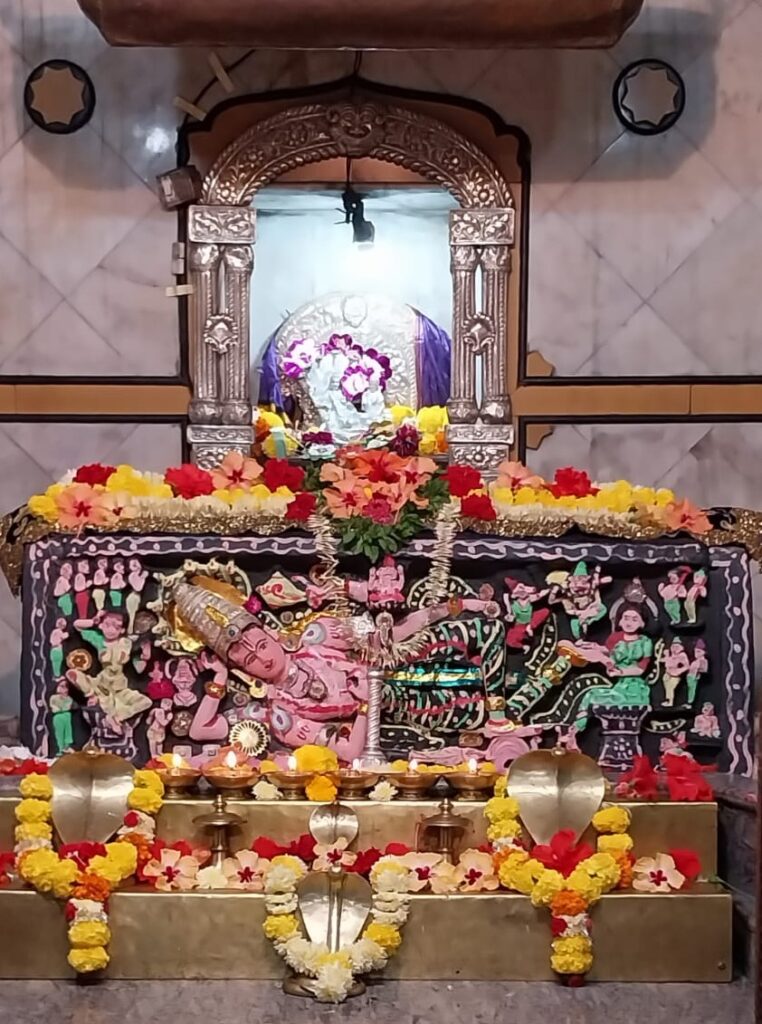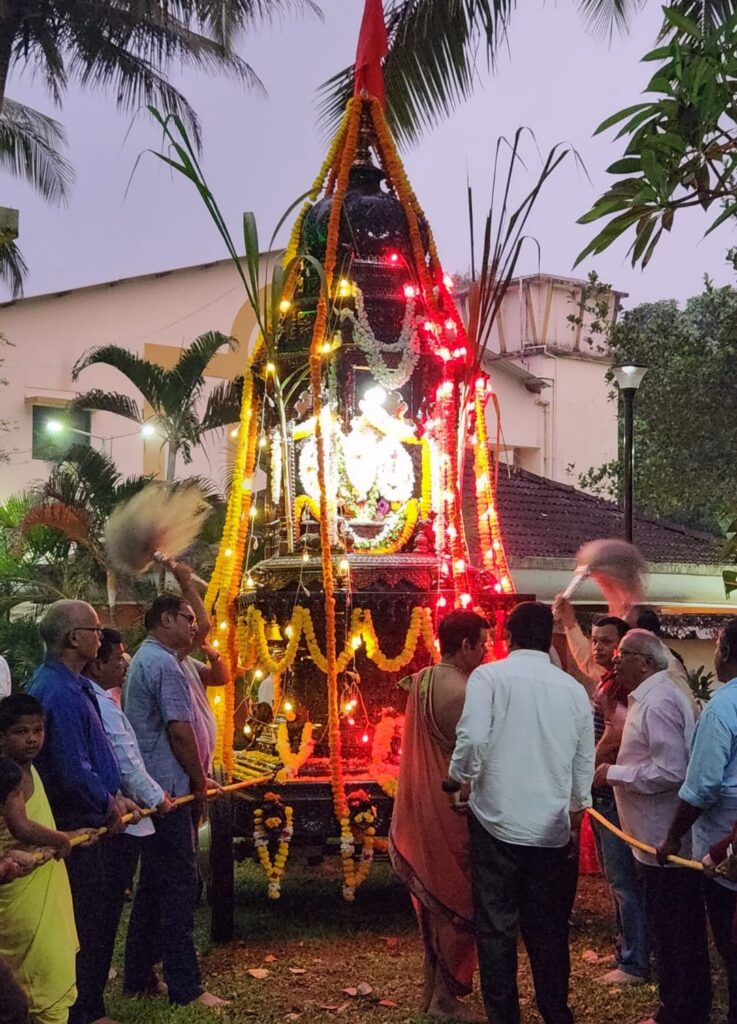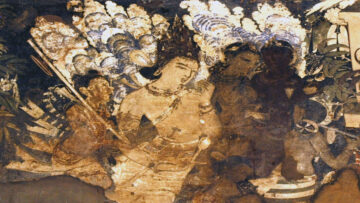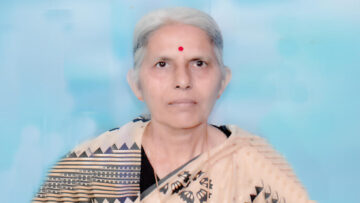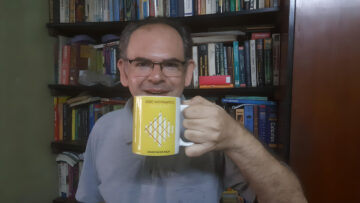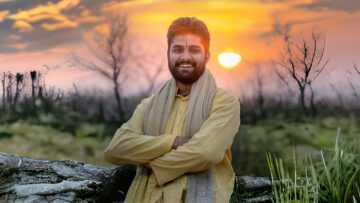Smt Meena Sundaram combines two beautiful subjects – mathematics and Carnatic music with a Masters degree in both. Residing in Goa, she has researched extensively the art history and temple culture of the region. Her lullaby won the third prize at the Azadi ka Amrit Mahotsav and is set in tune in Desh raga, common in both systems of Indian music.
THAALATTU – KAN URANGAI
In this interview, she points out that Goa, located on the west coast of India is world famous for its “picturesque beaches, its natural landscape, and historical sites that portray the remnants of Portuguese rule.” She says there are many sites that remain hidden in the depths of small villages across the Ponda Taluka of the South Goa district. Temples were plundered and destroyed by foreign rule, but what is left is of great significance to many Vaishnavas.
Sundaram has deep interest in ancient texts which make references to the temples and holy sites of Goa also known as Gomantak. At an IndicA conference – “Feminine in Hinduism”, she spoke about the unique Devaki Krishna temple at Marcel with Devaki holding baby Krishna on her hips. Nowhere else in India is there a temple dedicated exclusively to Devaki and Krishna.
[Read here: Devaki – The Unique Mother – Indic Today]
At the IndicA conference on Vaishnavism, she spoke on another rare temple – Sri Madanant temple, the only temple where Lord Vishnu is in ‘Seshasayana’ over a water body in Savoi Verem, Goa.
[Read here: The Abode of Lord Vishnu at Shri Madanant Temple in Goa – Indic Today ]
Are there many temples dedicated to Vishnu in this region?
Though there were many temples dedicated to Vishnu in this region many were destroyed during the Portuguese rule. There are sculptures and some temples in Goa dedicated to Lord Vishnu. Padmanabha from Cuncolim village, Gopinath from Netravali village, Bindhumadhav from Madkai village, and Keshava from Loliem village. At Zambaulim temple both Shiva and Vishnu are worshipped in same temple complex. Lord Balaji temple has come up in Cuncolim village. The postures of Lord Vishnu in temples can be categorised as standing, sitting or sleeping positions. Here in Savoi Verem Sri Madanant temple Lord Vishnu is in the sleeping posture – Seshasayana.
Figure 1: Shri Madanant Temple, Goa
Historical records trace the Ananta temple to the 16th century. Who built this shrine and why is its architecture different from other temples in Goa?
No definite data is available on its original construction. The current structure has come up from 1846 . The temple is designed according to Nagara architecture.
This temple has the Garbhagriha, Antharala, Sabha Mandapa, and a spacious Mukha Mandapa. It also has Garuda, the vāhana of Lord Vishnu at the entrance. The idol rests directly over a water body – Devachi thali. Located in the central yard is the Deepa Sthambha – a tower with notches for lamps. The temple has intricate wooden carvings. One of the pillars is plated with silver and it is on this pillar that ‘Kaul prasad’ ritual is performed with tulsi.
How did the destruction of temples by the Portuguese affect the Vaishnavite culture of Goa
There was a big exodus of Sāraswats and other Hindus from Goa after the Portuguese oppression. Many migrated to coastal Karnataka and Kerala. There were a total of 22 temples of Lord Vishnu 5 in Tiswadi, 4 in Bardez and 13 in Salcete, unfortunately all were destroyed during the Portuguese rule. Most of the idols from other temples were shifted to Ponda taluka (known as Antruz mahal) which was used as a safe haven; it was then under the control of Hindu Soundekar dynasty. Here the culture and practices have been preserved. The Vaishnavite movement spearheaded by Sri Madhvacharya provided spiritual guidance to a community which had to migrate multiple times, but they did not abandon their devotion to their kuladevatās.
Figure 2: Seshashayana with gandha alankaram at Sri Madananth temple
Are cultural practices such as the Kolu dance based on the stories of the avatars of Vishnu still being performed
Religious folk dance called Dindi (meaning procession) is performed outdoors during utsavs having the drummer and the chorus leader in the centre to provide the musical background. The chorus leader sings verses which are an integral part of the epics. By swaying to the specific movements the dancers create a unique ambience. The steps of the dance are energetic which generates a positive feeling among both the participants as well as the audience. When the chorus leader picks up speed of the rhythm, the group forms geometrical formations. The songs pertain to Lord Krishna and the dancers wear the traditional nine yards. The musical instruments like the cymbals, Pakhawaj also play a crucial role in creating musical tapestry.
In Sri Madanant temple the annual utsav takes place in month of Margseesh, first day is Khalotsav where the entire village participates dancing to tune of ‘Hari maja Panduranga, Sakhyaharimaja Panduranga’, carrying arecanut palm leaves in their hands. Second day is Sangoddutsav, third day is Garuda vāhan, followed by Vijaya rath, Simha and Hathi ambari, Seshavahan, Dashami palki.
Figure 3: Sri Balaji Rathotsav at Sri Gomantak Tirupati Balaji Saunsthan, Cuncoliem, Goa
Are Gowd Sāraswat Brahmins the main Vaishnava community in Goa. When did they come to Goa?
Gowd Sāraswat Brahmins aka GSBs are both Smarthas and Vaishnavas. They were formed by the merger of Konkani speaking brahmin communities whose kuladevata is in Goa. Originally all followed the Smartha tradition that followed the Panchāyatana worship as laid down by Sri Adi Shankaracharya. Sri Kaivalya Mutt at Kavle traces an unbroken line back to the founder of Advaita School of Philosophy, Sri Gaudapadacharya. Sri Madhvacharya of Udupi and one of the ashta mutts founded by him is credited with introducing Vaishnavism in Goa.
The Gowd Sāraswat Brahmins are considered to be disciples of Sāraswat muni. Sāraswat also implies that they once resided in the basin of Saraswathi river located in modern day Punjab Haryana. As the mighty Saraswathi river started to dry up due to tectonic shift in Himalayan region, they went in search of greener pastures. Some went to Kashmir, some to Trihotra in today’s Bihar, others to the Konkan coast and Goa. The prefix Gowd came to them as they were followers of Advaita preached by Gaudapadacharya. They are supposed to have arrived via Kutch and and via port city Dwarka. Another reason for Gowd was that they came from Trihota in Bihar which was then known as Gowda Desha.
In Sahyadri Khanda of Skanda Purana it is said that Lord Parashurama brought 96 families from Trihotra in Bihar and settled them in Goa. 66 of them were settled in Sahasashti in South Goa and 30 in Tiswadi. Later 12 more families arrived and settled in Bardez.
All Sāraswats were Smarthas and followers of Kaivalya mutt before Sri Madhvacharya introduced them to Vaishnavism. The unique aspect of Sri Madhvacharya’s preaching was that he never prohibited anyone from worshipping other deities like Shiva, Devi and Ganesha. Gowd Sarawat Brahmins who became Vaishnavas worship their old Shaivite kula devathas. Another unique thing about Vaishnavas in Gowd Sāraswat brahmins is that they worship Sri Damodar who is in the form of Sri Vishnu in linga form.
Which mutts are Goan Vaishnavas affiliated to?
The Gaudapadacharya mutt was the first mutt to be established and was dedicated to the study of Advaita Vedanta in the Goan village of Keloshi in 8th century AD. It is the oldest mutt of the Sāraswat community. This was later shifted to Kaivalyapura or Kavale as the Keloshi (Quelshim) mutt was destroyed by the Portuguese in 1564 AD.
In the 13th century Dvaita Vedanta as advocated by Sri Madhvacharya became popular in coastal Karnataka as well as Goa. Many Sāraswats adopted Vaishnavism.
The first Vaishnava Sāraswat mutt was established in 1475 CE when Sri Narayana Theertha was initiated into sanyas by Sri Ramachandra Theertha Swamiji of Palimaru mutt one of the ashta mutts of Udupi founded by Sri Madhvacharya. Later the mutt in Goa was established by the sixth guru in this tradition in 1656 in Parthagali, when Parthagali was controlled by Hindu Kings of Soundekar dynasty. Since then this mutt has been known as Shree Samsthan Gokarn Partagali Jeevottam mutt.
The Sree Kashi mutt Samsthan was formed in Varanasi at the behest of the Gowd Sāraswat community of Kochi in 1542. Due to the Portuguese invasion many had migrated to different places like Kerala and Karnataka. Srimad Yadavendratheertha Swamiji became the mathadipati of Shree Kashi mutt Samsthan in 1542.
All Gowd Sāraswat brahmins who follow Vaishnavism are followers of either Sree Gokarn Partagali mutt or Sree Kashi mutt Samsthan.
Places close to Goa like Gokarna are very important to Shaivism. Are there such places for Vaishnavism
The Gowd Sāraswat brahmins came to Karnataka and settled in Karwar, Ankola, Kumta Bhatkal, Shirali etc. Some settled in Kerala in Ernakulam, Cochin, Manjeshwar etc others went to Udupi and Dakshina Kannada previously under the Mysore state. Some settled in Pandya Nagari now known as Karkala. Sri Venkatramana temple, Karkala also known as Paduthirupathi is a temple in Karnataka built by Gowd Sāraswat brahmins of Karkala in 1537. Padu means west.
Established in the 16th century by 43 families from Goa, the temple of Sri Lakshminarayan, Sri Mahamaya is in Ankola. Sri Bhangara Mahamaya festival takes place every 5 to 7 years when the golden idol of Sri Mahamaya is taken out. Venkatramana temple in Kumta (Kumbhapuri) is managed by Sri Gokarn Partagali Jeevottam Sansthan. Like this there are many temples established by the Gawd Sāraswat brahmins in their place of settlement.
Disclaimer: The opinions expressed in this article belong to the author. Indic Today is neither responsible nor liable for the accuracy, completeness, suitability, or validity of any information in the article.

